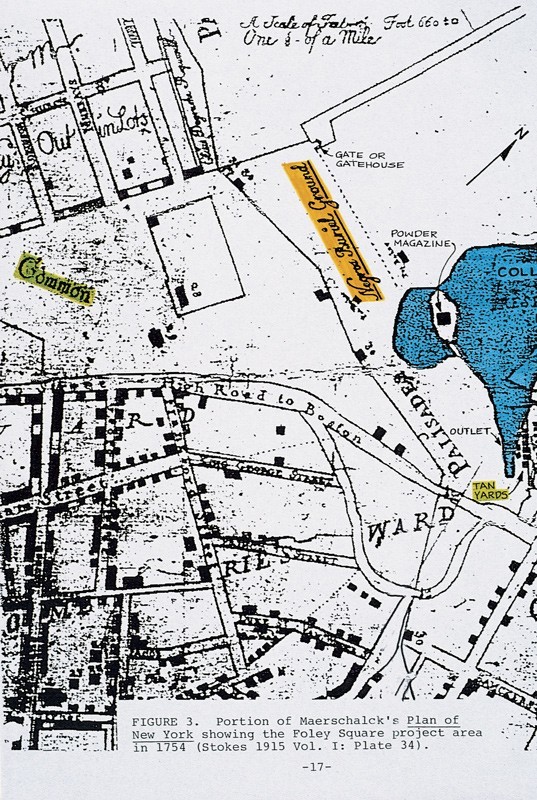
Detail of F. Maerschalck’s Plan of New York from an Actual Survey, Anno Domini M, DCC, LV (depicted 1754; issued 1755) showing the Foley Square project area. (Photo, courtesy John Milner Associates.) The original is in the collection of the New-York Historical Society; it is reproduced in I. N. Phelps Stokes, The Iconography of Manhattan Island, 1498–1909, 6 vols. (1915–1928; Union, N.J.: Lawbook Exchange, 1998), vol. 1, The Period of Discovery (1524–1609), pl. 34.
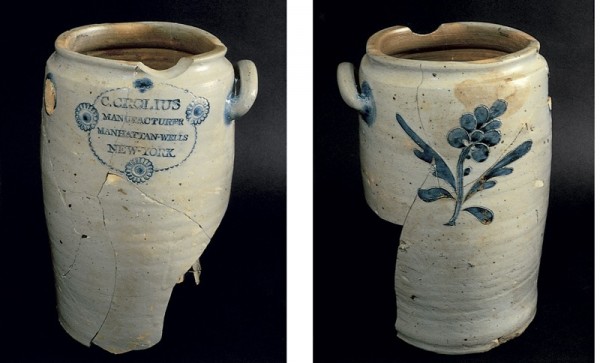
Jar, Clarkson Crolius, New York, New York, ca. 1800–1814. Stoneware. H. 18". Mark: “C. CROLIUS / MANUFACTURER / MANHATTAN-WELLS / NEW-YORK” (New York State Museum; photo, Rob Tucher.) This jar was excavated from an early-nineteenth-century context at the Barclays Bank site. The maker’s mark is stamped on one side, and an incised floral motif is on the other. Both are filled in with blue.

Jar, Clarkson Crolius, 1800–1814. Stoneware, cobalt oxide. H. 11", D. 7 1/2", Mark: stamped on shoulder, “C. CROLIUS / MANHATTAN-WELLS / NEW-YORK” (Courtesy, New-York Historical Society, 1937.808.) Two variations of the “floral moosehead” motif, joined by a blue band, surround this Crolius jug.
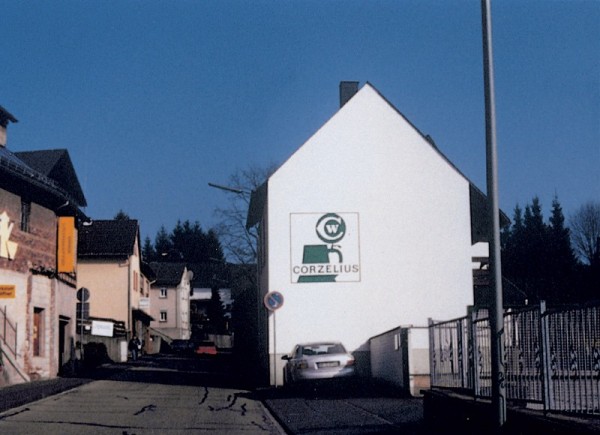
Contemporary advertisement for Corzelius Pottery, Hohr-Grenzhausen, Germany, 2003. (Photo, Meta Janowitz.)
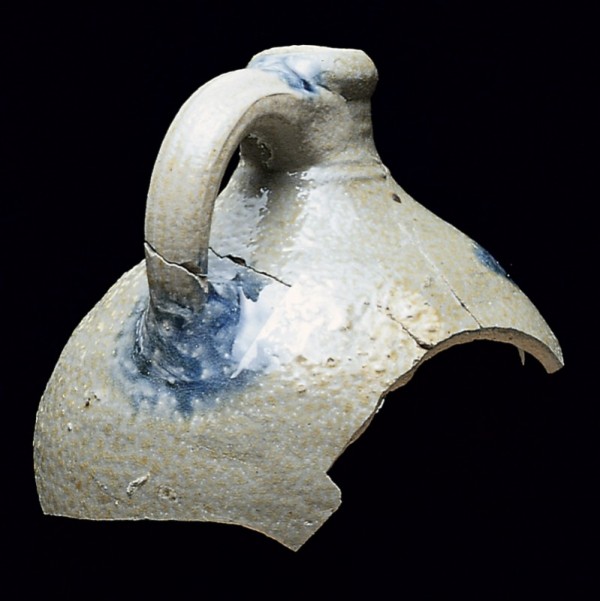
Jug fragment, Crolius/Remmey families, Manhattan, New York, ca. 1720–1765. Stoneware. (African Burial Ground Collection; photo, Rob Tucher.)
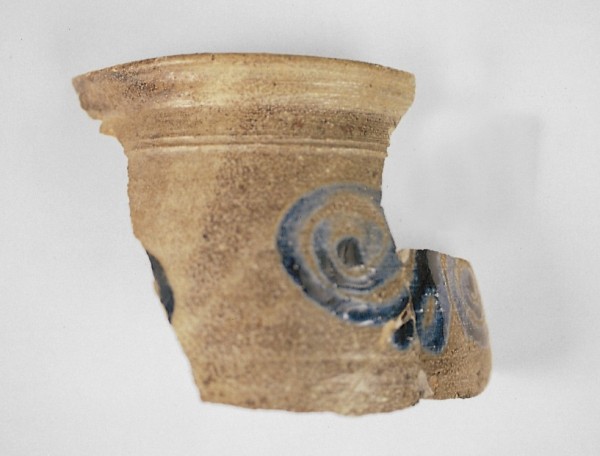
Jar fragment with spiral motif, Crolius/Remmey families, Manhattan, New York, ca. 1720–1765. Stoneware. (African Burial Ground Collection; photo, John Milner Associates.) This sherd was destroyed when the World Trade Center collapsed on September 11, 2001.
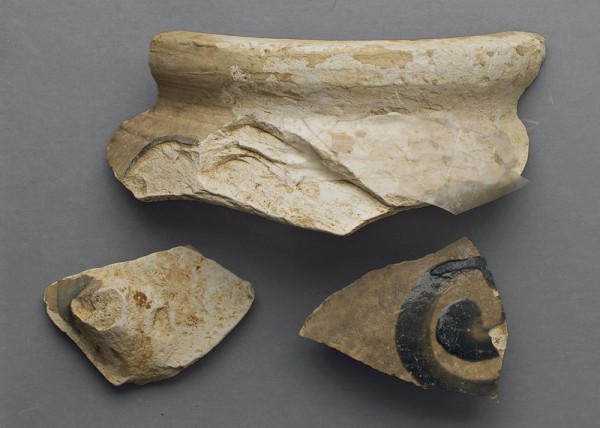
Jar fragments, Crolius/Remmey families, Manhattan, New York, ca. 1720–1765. Stoneware. (African Burial Ground Collection; photo, John Abbott.) Note the spiral motif on this underfired small-mouthed jar.
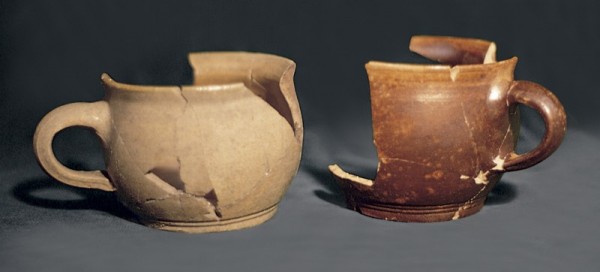
Rounded porringers, Crolius/Remmey families, Manhattan, New York, ca. 1720–1765. Stoneware. (African Burial Ground Collection; photo, Joseph Balicki.) The vessel at right was covered with a brown slip. These were destroyed when the World Trade Center collapsed on September 11, 2001.
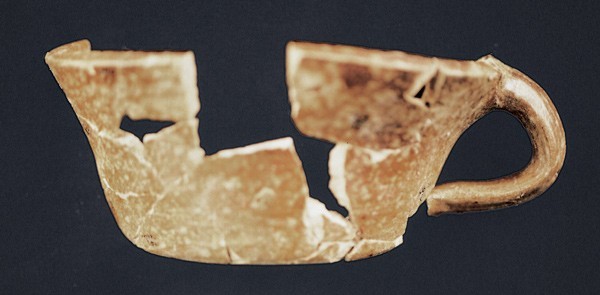
Slant-sided porringer, Crolius/Remmey families, Manhattan, New York, ca. 1720–1765. Stoneware. (African Burial Ground Collection; photo, Joseph Balicki.) This porringer was destroyed when the World Trade Center collapsed on September 11, 2001.

Tankard fragments, Crolius/Remmey families, Manhattan, New York, ca. 1720–1765. Stoneware. (African Burial Ground Collection; photo, Rob Tucher.)

Tankard fragments, Crolius/Remmey families, Manhattan, New York, ca. 1720–1765. Stoneware. (African Burial Ground Collection; photo, John Abbott.) These underfired sherds have an incised and cobalt-filled motif.
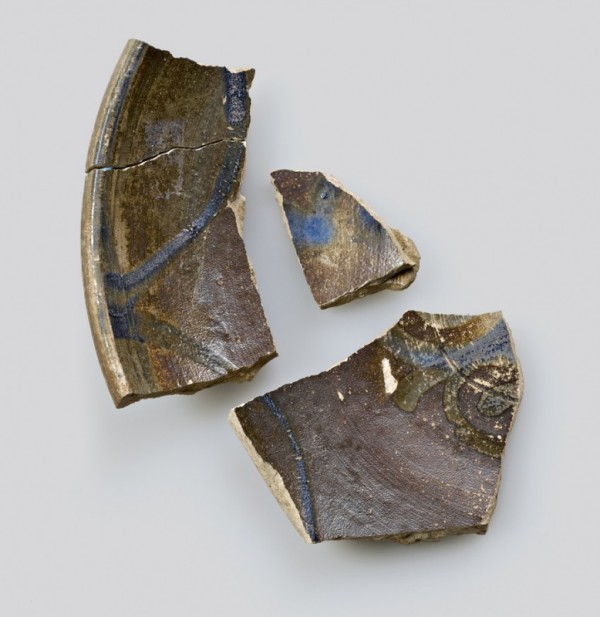
Dish or shallow bowl fragments, Crolius/Remmey families, Manhattan, New York, ca. 1720–1765. Stoneware. (African Burial Ground Collection; photo, Gavin Ashworth.) These sherds show brushed cobalt decoration over a brown slip.
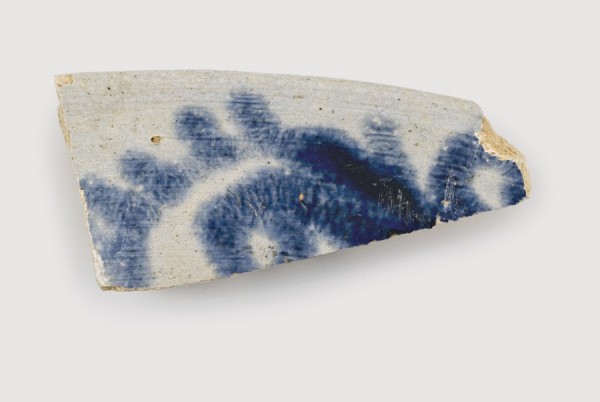
Plate rim fragment with painted motif, Crolius/Remmey families, Manhattan, New York, ca. 1720–1765. Stoneware. (African Burial Ground Collection; photo, Gavin Ashworth.)

Molded teapot spout, Crolius/Remmey families, Manhattan, New York, ca. 1720–1765. Stoneware. (African Burial Ground Collection; photo, Gavin Ashworth.)
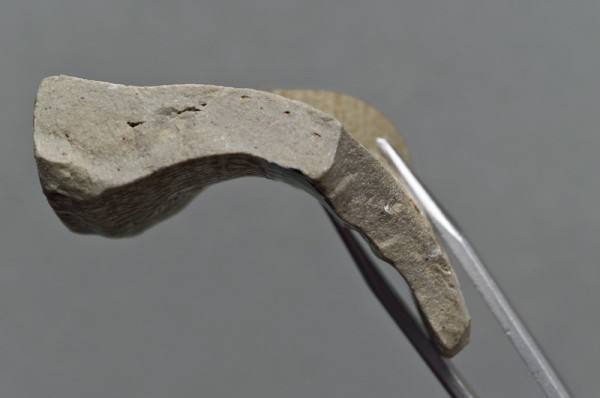
Jar rim fragment, Crolius/Remmey families, Manhattan, New York, ca. 1720–1765. Stoneware. (African Burial Ground Collection; photo, John Abbott.) This represents the most common type of rim profile for jars.

Jar rim fragments, Crolius/Remmey families, Manhattan, New York, ca. 1720–1765. Stoneware. (African Burial Ground Collection; photo, John Abbott.) The assemblage here displays a variety of profiles.
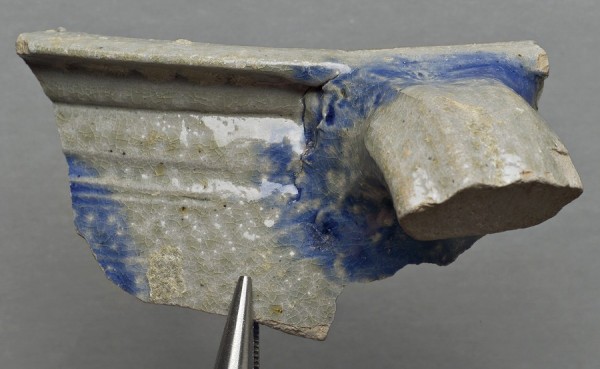
Chamber pot rim fragment, Crolius/Remmey families, Manhattan, New York, ca. 1720–1765. Stoneware. (African Burial Ground Collection; photo, John Abbott.) This sherd shows blue decoration around the handle attachment as well as on at least one side.
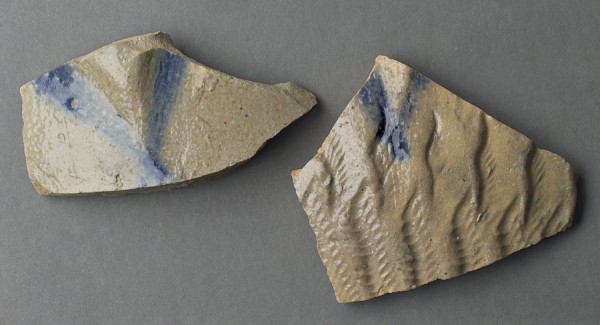
Small jug or round mug sherds, Crolius/Remmey families, Manhattan, New York, ca. 1720–1765. Stoneware. (African Burial Ground Collection; photo, John Abbott.) The rat-tail handle attachments shown here are outlined in blue.
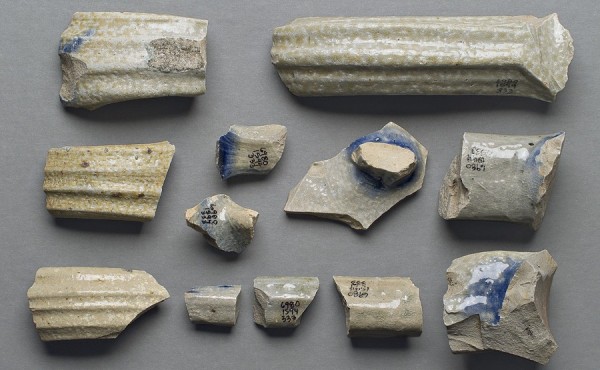
Handle fragments, Crolius/Remmey families, Manhattan, New York, ca. 1720–1765. Stoneware. (African Burial Ground Collection; photo, John Abbott.) A variety of handle shapes is shown.
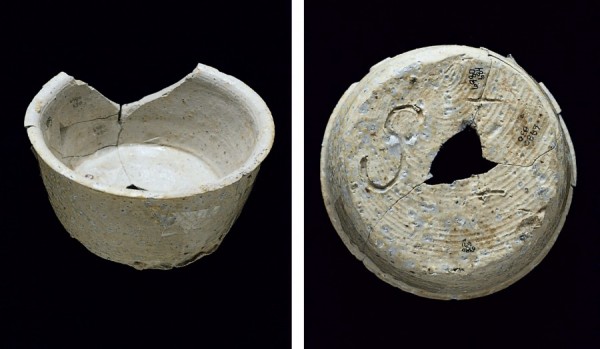
Ointment pot or test piece, Crolius/Remmey families, Manhattan, New York, ca. 1720–1765. Stoneware. Mark: incised on base, “IS” or “SI” (African Burial Ground Collection; photo, Rob Tucher.)
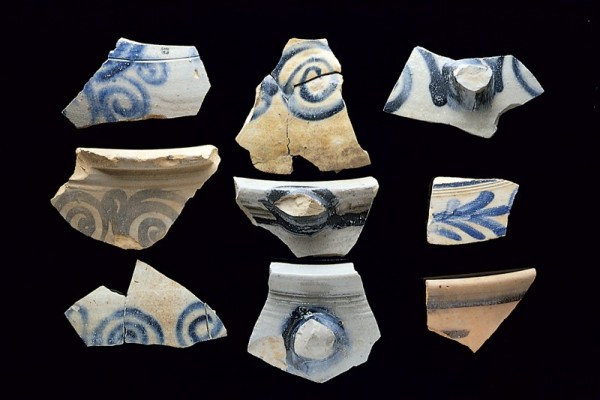
Sherds, Crolius/Remmey families, Manhattan, New York, ca. 1720–1765. Stoneware. (African Burial Ground Collection; photo, Rob Tucher.) Almost all of the fragments in this group were decorated with variants of the spiral motif. They were destroyed when the World Trade Center collapsed on September 11, 2001.
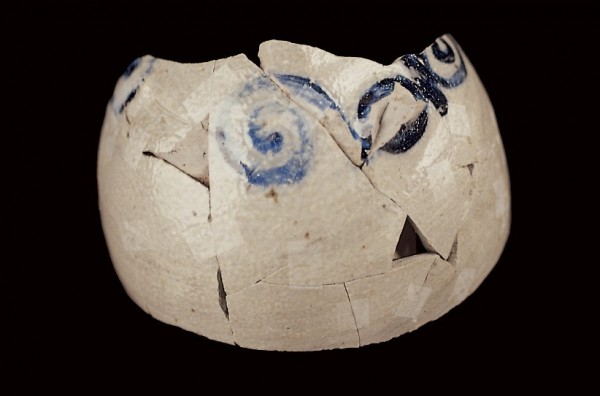
Jug fragment, Crolius/Remmey families, Manhattan, New York, ca. 1720–1765. Stoneware. (African Burial Ground Collection; photo, John Milner Associates.) These fragments, with a painted spiral motif and handle base encircled with a blue band, were destroyed when the World Trade Center collapsed on September 11, 2001.
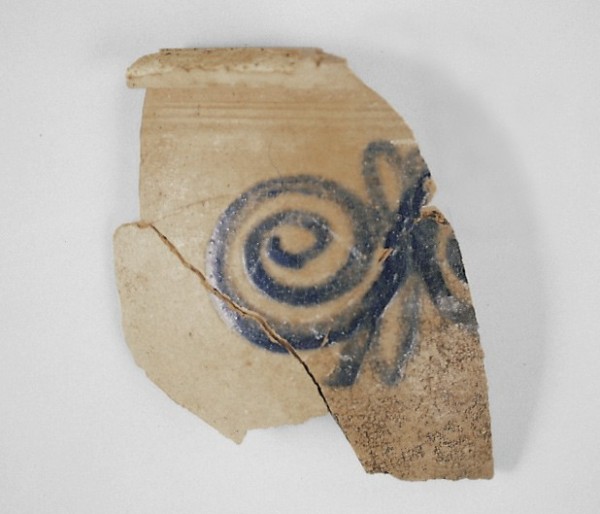
Jar fragment with “spiral butterfly” motif, Crolius/Remmey families, Manhattan, New York, ca. 1720–1765. Stoneware. (African Burial Ground Collection; photo, John Milner Associates.) This sherd was destroyed when the World Trade Center collapsed on September 11, 2001.

Sherds with cobalt spiral and notch decoration, Crolius/Remmey families, Manhattan, New York, ca. 1720–1765. Stoneware. (African Burial Ground Collection; photo, John Abbott.)
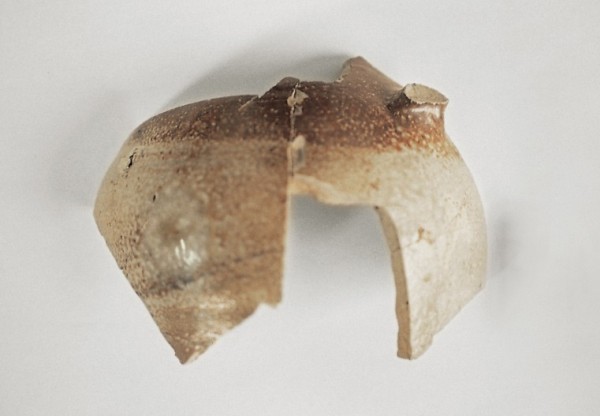
Jug fragment, Crolius/Remmey families, Manhattan, New York, ca. 1720–1765. Stoneware. (African Burial Ground Collection; photo, John Milner Associates.) From this remnant we can see that the top half of the jug was covered in brown slip. The fragment was destroyed when the World Trade Center collapsed on September 11, 2001.
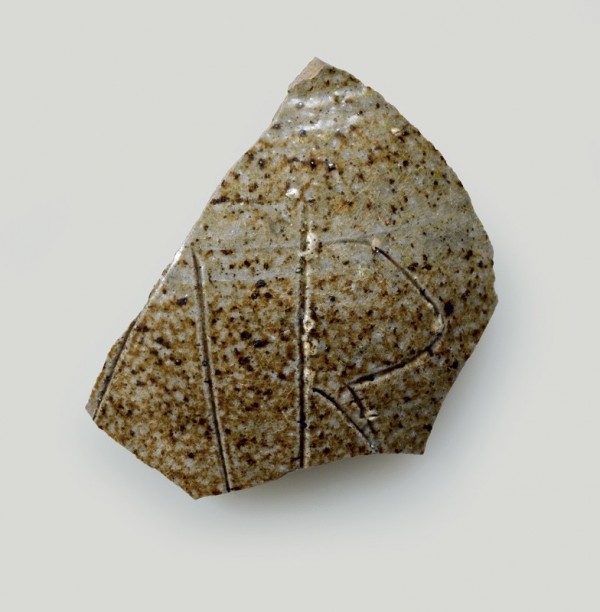
Jug fragment, Crolius/Remmey families, Manhattan, New York, ca. 1720–1765. Stoneware. (African Burial Ground Collection; photo, Gavin Ashworth.) The fragment shown here displays brown slip and an unidentified incised motif.
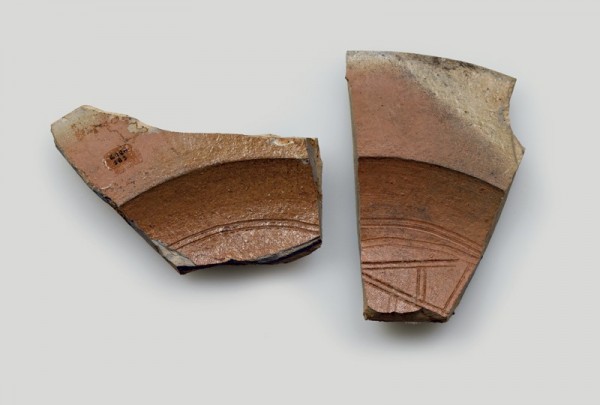
Plate fragments, Crolius/Remmey families, Manhattan, New York, ca. 1720–1765. Stoneware. (African Burial Ground Collection; photo, Gavin Ashworth.) This unusual plate is decorated with a brown slip and an incised motif.
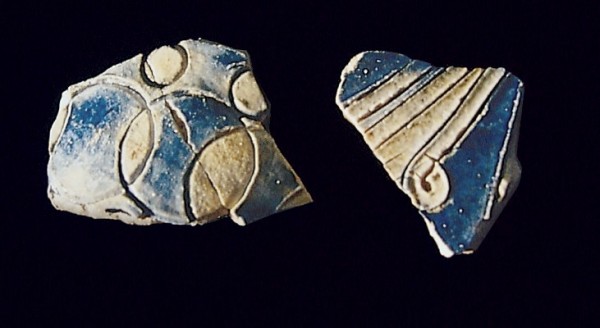
Sherds, Crolius/Remmey families, Manhattan, New York, ca. 1720–1765. Stoneware. (African Burial Ground Collection; photo, Rob Tucher.) The sherds are decorated with incised and filled-in motifs.
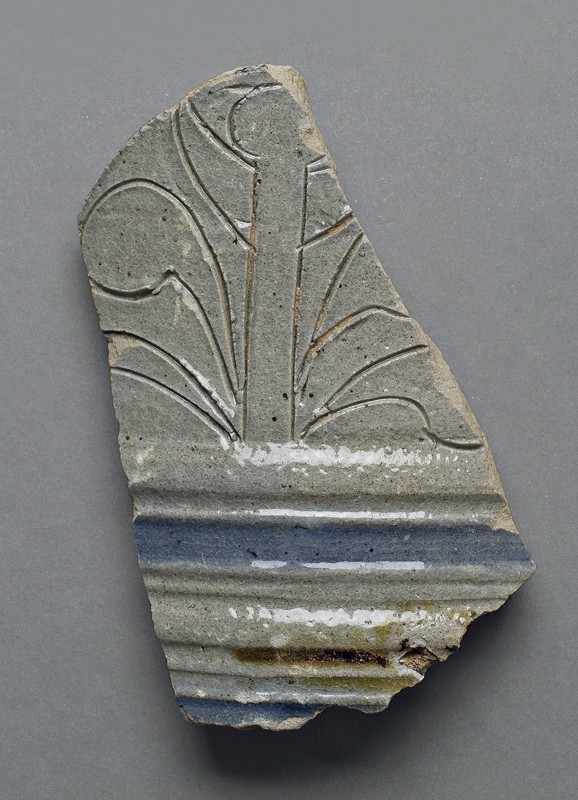
Tankard fragment, Crolius/Remmey families, Manhattan, New York, ca. 1720–1765. Stoneware. (African Burial Ground Collection; photo, John Abbott.) This piece shows an incised but uncolored motif and cordons filled in with blue.
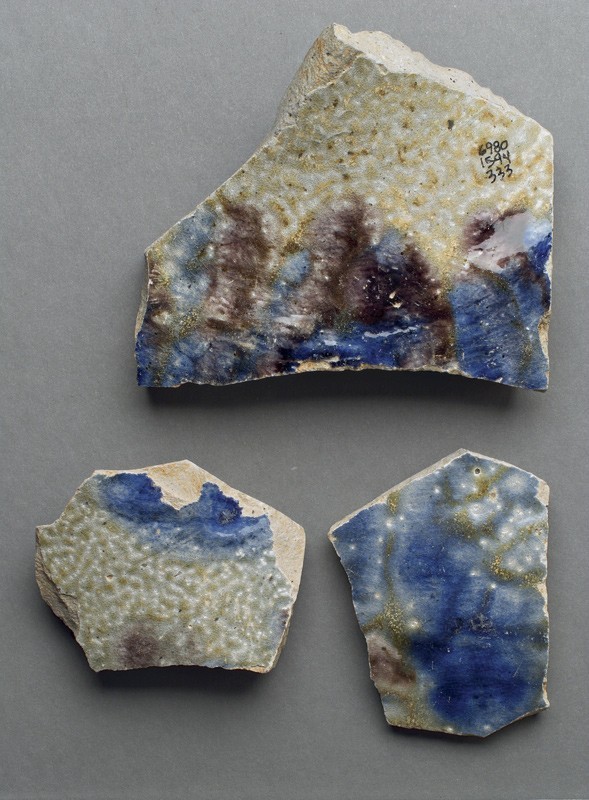
Sherds, Crolius/Remmey families, Manhattan, New York, ca. 1720–1765. Stoneware. (African Burial Ground Collection; photo, John Abbott.)
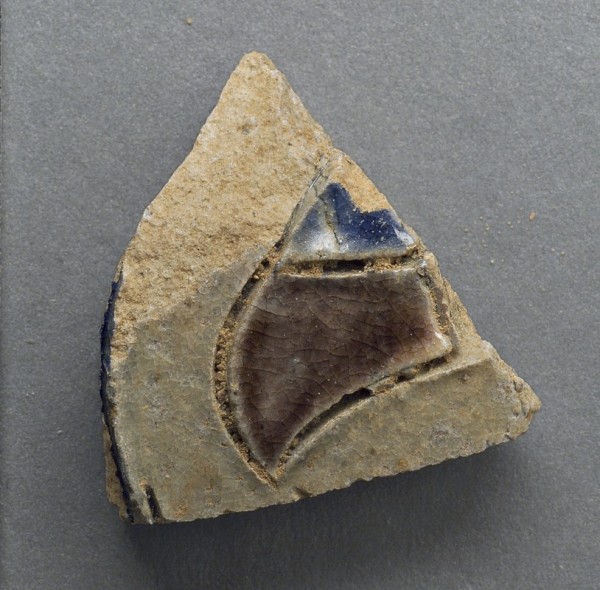
Sherd, Crolius/Remmey families, Manhattan, New York, ca. 1720–1765. Stoneware. (African Burial Ground Collection; photo, John Abbott.)
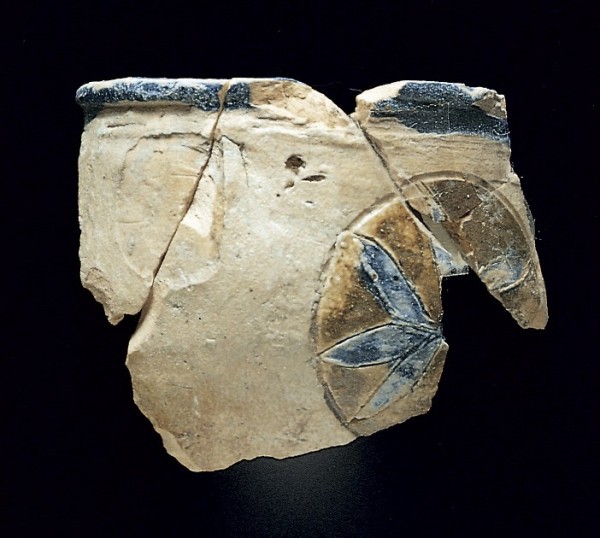
Small jar fragment, Crolius/Remmey families, Manhattan, New York, ca. 1720–1765. Stoneware. (African Burial Ground Collection; photo, Rob Tucher.) The incised star motif is filled in with blue and a manganese slip. The fragment was destroyed when the World Trade Center collapsed on September 11, 2001.
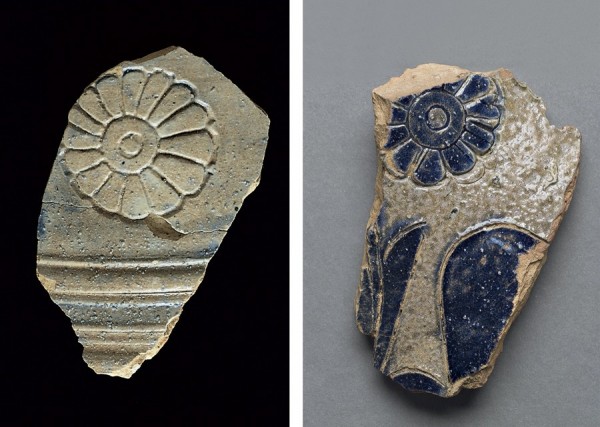
Sherds, Crolius/Remmey families, Manhattan, New York, ca. 1720–1765. Stoneware. (African Burial Ground Collection; photos: Rob Tucher, left; John Abbott, right.) These sherds are stamped and incised, and the motif is filled in with blue. Note the double stamping of the flower, which is very similar to the one used on the Barclays Bank jar illustrated in fig. 2.
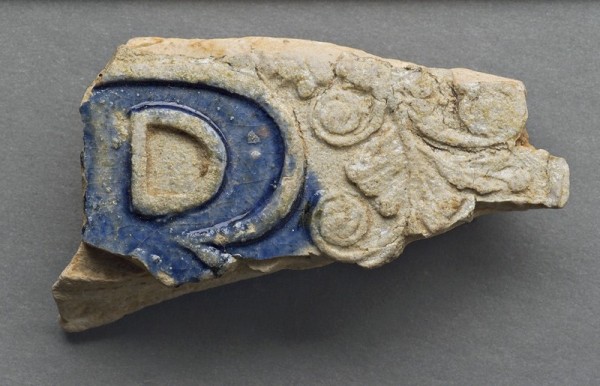
Jug or mug fragment, Crolius/Remmey families, Manhattan, New York, ca. 1720–1765. Stoneware. (African Burial Ground Collection; photo, John Abbott.) This sherd shows part of a sprigged GR medallion.
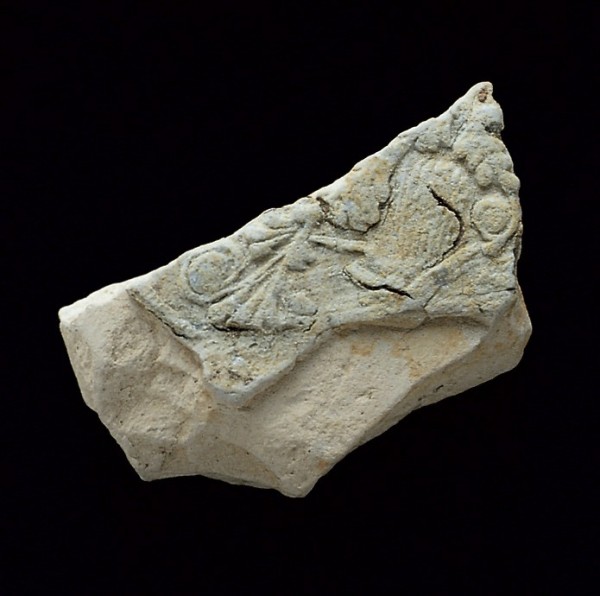
Sherd, Crolius/Remmey families, Manhattan, New York, ca. 1720–1765. Stoneware. (African Burial Ground Collection; photo, Rob Tucher.) Based on comparisons to intact examples, the remaining sprigged motif on this sherd, which was destroyed on September 11, 2001, was part of a GR medallion.
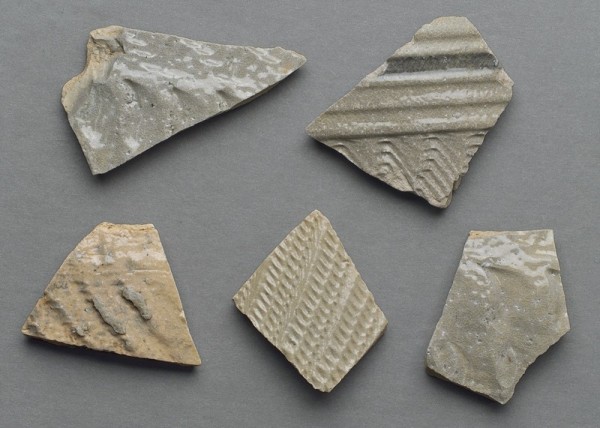
Sherds with rouletted motifs, Crolius/Remmey families, Manhattan, New York, ca. 1720–1765. Stoneware. (African Burial Ground Collection; photo, John Abbott.)

Porringer fragments with diagonal rouletted motifs, Crolius/Remmey families, Manhattan, New York, ca. 1720–1765. Stoneware. (African Burial Ground Collection; photo, John Abbott.)
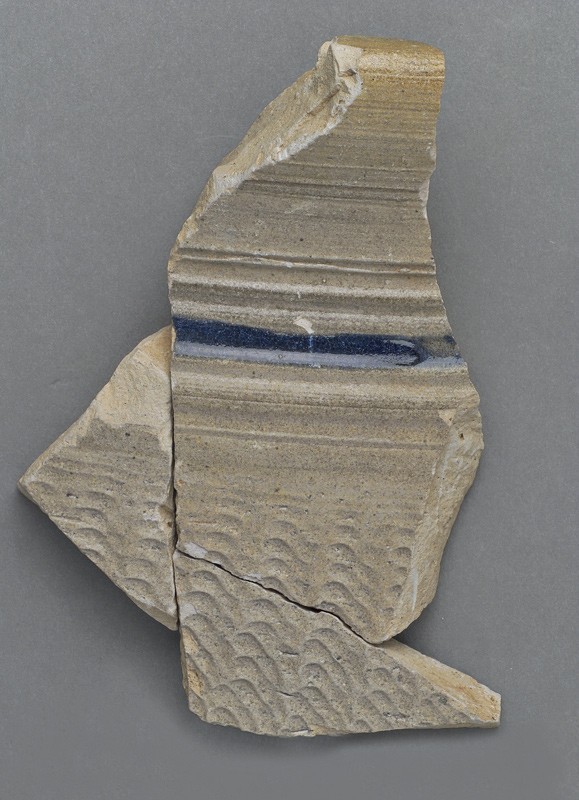
Jar fragment with rouletted motif, Crolius/Remmey families, Manhattan, New York, ca. 1720–1765. Stoneware. (African Burial Ground Collection; photo, John Abbott.)
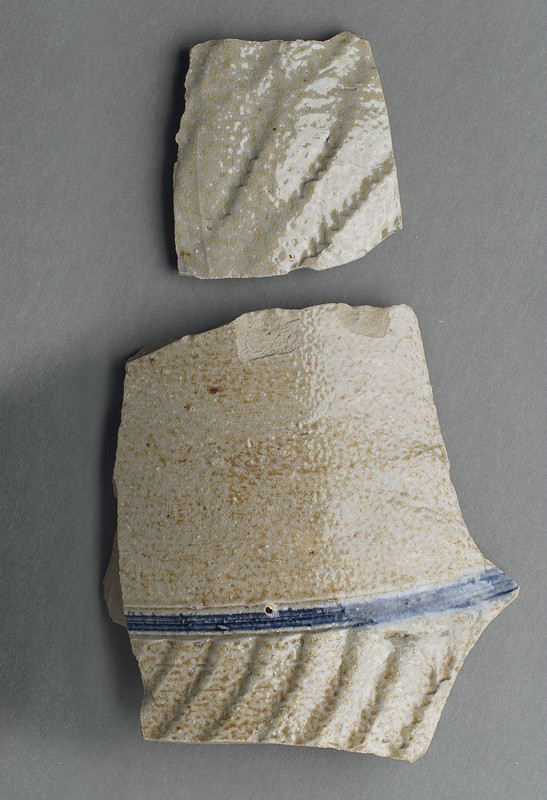
Jug fragments with rouletted motifs, Crolius/Remmey families, Manhattan, New York, ca. 1720–1765. Stoneware. (African Burial Ground Collection; photo, John Abbott.)
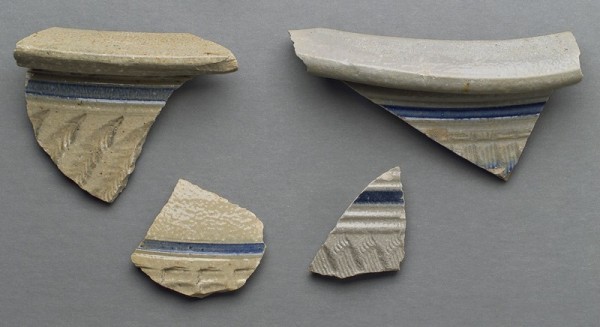
Chamber pot fragments with rouletted motifs, Crolius/Remmey families, Manhattan, New York, ca. 1720–1765. Stoneware. (African Burial Ground Collection; photo, John Abbott.)
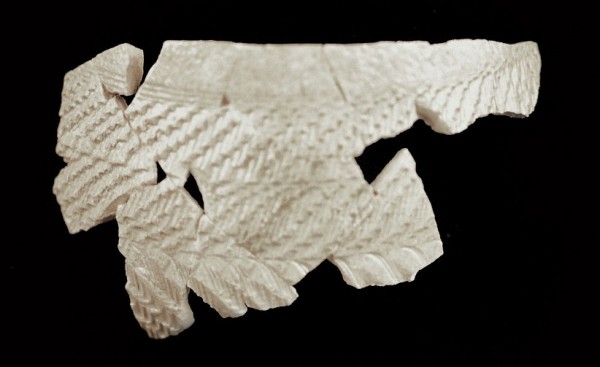
Jug fragments, Crolius/Remmey families, Manhattan, New York, ca. 1720–1765. Stoneware. (African Burial Ground Collection; photo, John Milner Associates.) These partially mended jug sherds have wide bands of rouletted motifs. All were destroyed when the World Trade Center collapsed on September 11, 2001.

Rim fragment with brown line, Crolius/Remmey families, Manhattan, New York, ca. 1720–1765. Stoneware. (African Burial Ground Collection; photo, John Abbott.)

Rim and handle fragments with blue dots, Crolius/Remmey families, Manhattan, New York, ca. 1720–1765. Stoneware. (African Burial Ground Collection; photo, John Abbott.)
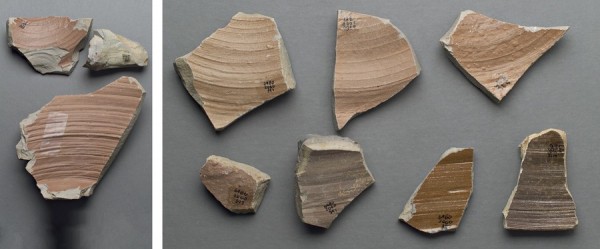
Sherds with interior brown slips, Crolius/Remmey families, Manhattan, New York, ca. 1720–1765. Stoneware. (African Burial Ground Collection; photo, John Abbott.) Note the variety of hues.
